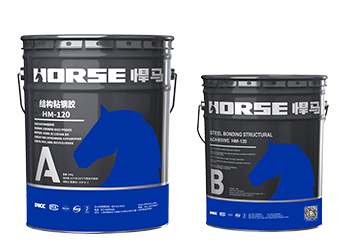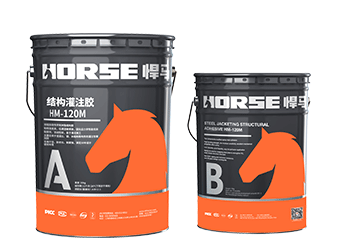Solutions
Horse Construction offers full range of structural strengthening materials with technical supports, documentation supports, products supports, project supports.
In the reinforcement of CFRP, there is a multi-layer application. Is it equally applicable to steel plate reinforced?Shanghai Horse Construction will analysis of multi-layer bonded steel plate reinforcement

In the reinforcement of steel plate, the thickness of the reinforced steel plate is directly related to the increase of the bearing capacity of the cross section. The calculation of the thickness of the steel plate is similar to the calculation of the amount of steel in the reinforced concrete structure. When the steel plate for reinforcing concrete flexural member reinforced concrete beam for example, first through component moment value after reinforcement for concrete compression zone height, the height of compression zone calculated steel plate reinforcement required section area, and finally determine the reasonable width of steel plate according to the beam width, calculate the required thickness of the steel plate.
After the above calculation, the thickness of the steel plate can be proved. But it can not be represented: the thickness of the steel plate can be increased infinitely to improve the bearing capacity of the structure.
If the steel plate is too thick, it will cause the splitting failure of the steel plate and the concrete substrate, and make the reinforcement failure. On the other hand, considering the safety of the whole structure and the crack and deformation of the component after reinforcement, the thickness of the steel plate should not be greater than 10mm.

From the requirements of the thickness of the steel plate, we can see that the multilayer steel plate is more limited than the multilayer carbon cloth. For the steel plate, whether it is a single layer or a multi-layer plate, the thickness of the plate has the highest limit of 10mm. Why should we use a multi-layer steel plate?
According to a large number of engineering experience, it is not suitable for the steel plate with high thickness to be constructed manually. The thickness of the artificial gluing and bonding steel plate should not be greater than 5mm. When the steel plate is larger than 5mm, the pressure injection should be used, which is similar to the external bonded steel reinforcement method.
That is to say, when we calculate that 5mm thick steel plate can't meet the need of reinforcement, if we want to adopt the form of single layer steel sheet, we need to use glue injection machine to carry out the construction, which is a little more complicated than the conventional steel bonded reinforcement. The multi-layer adhesive steel solves this problem.
However, it is still open to discuss whether multi-layered steel can play an ideal effect. Similar to the multilayer carbon cloth, multilayer steel from the second floor (including second layers), steel plate provides the strength would have caused the same reduction, 10mm thick, sticky steel to provide the strength is lower than the single-layer multilayer steel provides strength; bending member bonded steel plate, steel plate at both ends because of the edge effect will produce stress concentration is the weakest part of steel, especially for multi-layer bonded steel is so, so in the multi-layer bonded steel reinforcement, we must attach great importance to plate end anchorage measures to prevent the occurrence of debonding failure.
It is also a test for steel plate adhesive. The properties of the colloid have a direct influence on whether the plate can form a whole with the substrate, and there is a direct relationship between the steel plate and the steel plate.
You can find anything here you are in need of, have a trust trying on these products, you will find the big difference after that.

High strength, unidirectional carbon fiber wrap pre-saturated to form a carbon fiber reinforced polymer (CFRP) wrap used to strengthen structural concrete elements.

Two-component epoxy modified epoxy structural strengthening adhesive for bonded steel plate to concrete

Modified epoxy resin structural perfusion adhesive, specifically for supporting adhesive bonded steel reinforcement